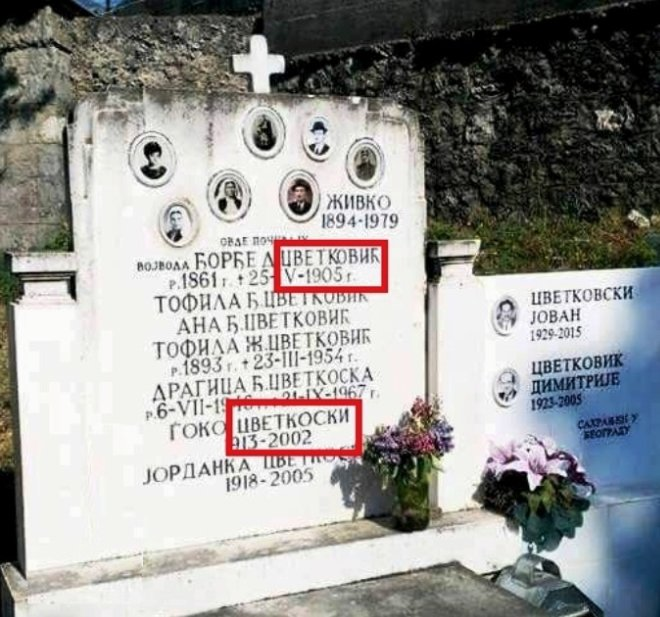Excerpts from Balkan foreign legions in eighteenth-century Italy: The Reggimento Real Macedone and its successors
Nicholas C. Pappas, Stanford University
Nation and ideology essays in honor of Wayne S. Vucinich
Edited by Ivo Banac, John G. Ackerman, and Roman Szporluk
East European Monographs, Boulder
Distributed by Columbia University Press, New York 1981
- The area of Cheimarra (Himarë) provided the bulk of the manpower for the Reggimento Cimarrioto and a major component of the Reggimento Real Macedone. Like Mani, Montenegro, and Souli, Cheimarra was one of those Balkan regions whose inhabitants were able to maintain their self-rule by virtue of their tribal or clan organization, the inaccessibility of their mountainous homelands, their proximity to Venetian controlled areas, and the prowess of their arms.
- In the eighty odd years during which Naples employed light infantry from the Balkans, the troops of the regiment and its successors were known popularly under three names in addition to the aforementioned camiciotti: the seemingly national names of Greci, Albanesi, and Macedoni. These names did not, however, have their later ethnic connotations but were instead stylized terms that described the soldiers’ general origins or mode of fighting. The term Greci was religious, denoting Orthodox faith ... The term Albanesi was used because that nation had achieved fame for its style of fighting as mercenaries of the Ottoman Empire ... The third epithet, Macedoni, which was used in the title of the regiment, indicated not only inhabitants of the area of Macedonia (as understood in either ancient or modem terms) but also applied to all peoples living in the areas once under the sway of Alexander the Great. This usage in effect made virtually all of the Balkan peninsula, as well as the Near East, a potential recruiting ground for these troops.
- Recruitment among the South Slavs caused friction with the Venetian Republic. Venetian authorities maintained intelligence on the recruiting activities of agents and officers from Naples, not only among Venetian subjects in Dalmatia, but also among Montenegrins and other Turkish subjects. They attempted to restrict the Neapolitan recruitment activities in Dalmatia and Montenegro (along with Cheimarra) because these areas were also recruiting grounds for Venetian schiavoni, morlachi, and Cimarrioti troops. Recruitment of South Slavs for the Macedonian regiment continued nonetheless, particularly among Serbs from Montenegro, Bocca di Cattaro, and Paštrovići.
- In the 1760s, a dispute concerning the South Slavic troops arose between the Neapolitan general staff and the commander of the regiment, Georgios Choraphas. The polemic was over whether “Illyrians” (Slavs) could serve in the Reggimento Real Macedone along with “Greeks”.
- Cheimarra remained the chief source for the manpower needs of the regiment, over and above other regions, as is evidenced by the great number of officers from notable Cheimarriote families such as: Andrōutses, Dōules, Gkikas, Gkinēs, Kōstas, Lekas, Mēlios, Panos, Vlasēs, and Zachos, as well as other sources listed below. This participation was no doubt due to Cheimarra’s proximity to the Neapolitan state and to the special relations maintained between them over the years.
Last but not least:
- Since Cheimarra has been part of the disputed border region of Greece and Albania in this century, the question of the nationality of the Cheimarriotes has prompted much discussion. From a linguistic standpoint, the issue is not clear, but there is some trend toward the Greek language. William Leake observed in 1805 that the male population of Cheimarra spoke Greek as well as Albanian, while most women spoke only the latter language. This observation, if correct, would indicate that Hellenization had occurred either as a result of their mercenary service with Greek speakers or through the work of a school that had operated in Cheimarra since the seventeenth century.
- A number of scholars, however, maintain that Greek is the autochthonous language of the area, some claiming that the dialect spoken there is akin to the Greek of the southern Peloponnesus or to that of the Greek-speaking villages of Apulia in southern Italy. In an ethnological gazetteer of 1857, a Greek author claimed that both Greek and Albanian were spoken in all of the villages of Cheimarra. An Italian scholar, who visited the area at the turn of this century, observed that five of the seven villages were bilingual and commented that the population, although of “pure Albanian origin,” was of Greek sentiment.
- A German geographer and a British archeologist, who both visited Cheimarra in the interwar period, came to the conclusion that most of the area’s villages were Greek-speaking. Finally, a Soviet study of the Albanian language and its dialects published in 1968 reported that three of the seven villages, including the town of Cheimarra, were wholly Greek-speaking but “considered themselves Albanians.”














